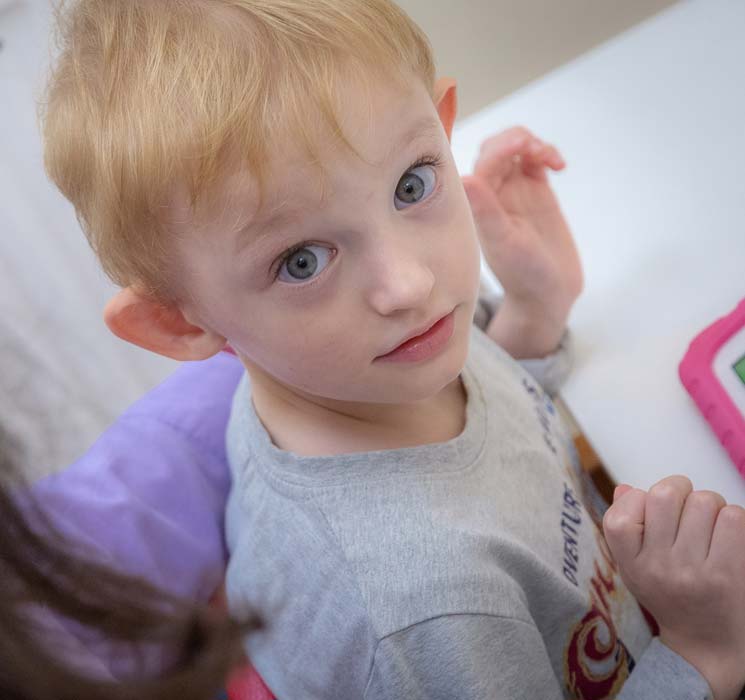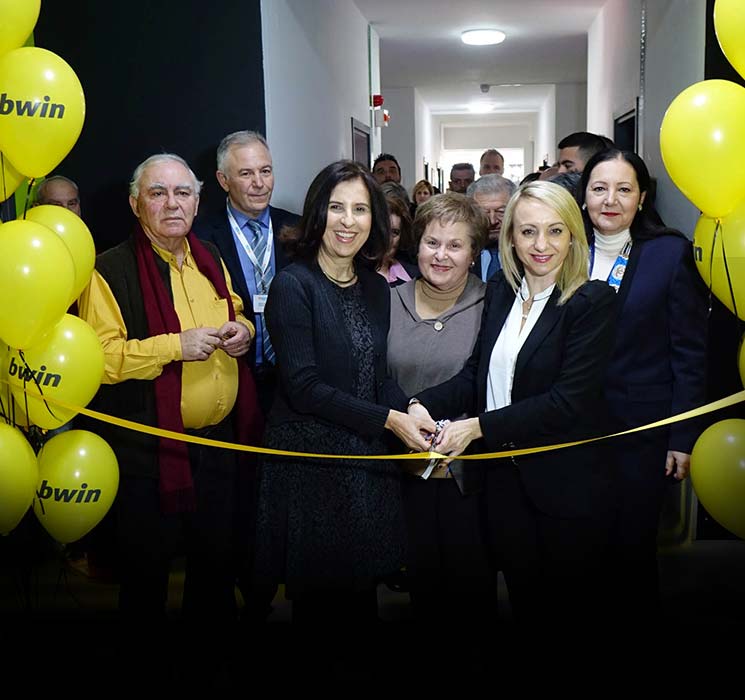Gait and Motion Analysis
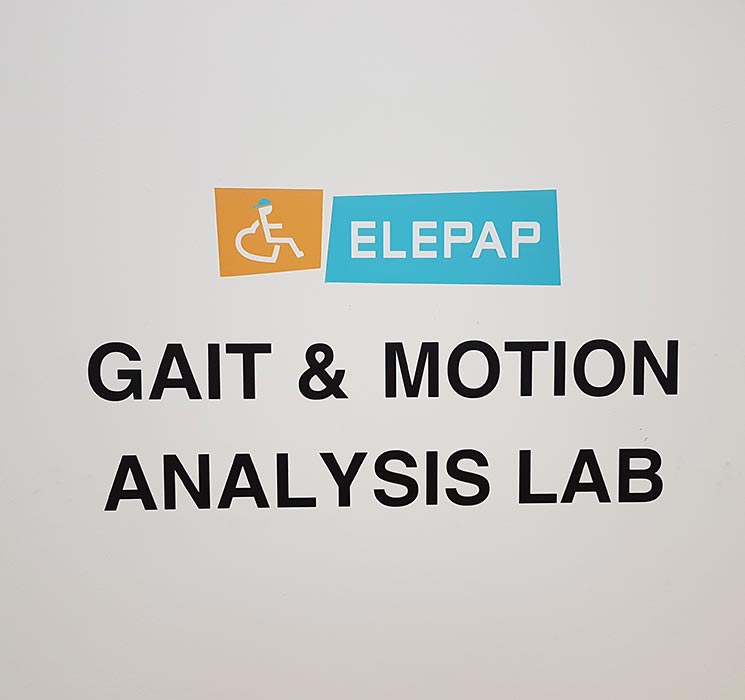
Definition
Motion analysis is the systematic measurement, description and examination of quantitative features that characterize human motion. Until now dealing with and treating gait and/or motor problems in individuals with neuromuscular conditions was based exclusively on a physical examination, a visual assessment of how they walk and selective radiological examination. It was in fact an extremely subjective manner. The data were difficult to codify and it was not easy to objectively assess the results of the applied treatment (surgical / conservative).
In recent years biomechanics has developed a methodology for the objective assessment of human motion, using modern technology. By objectively determining normal gait parameters, it became possible to identify abnormal walking patterns.
Location – Expert Team
In 2001, ELEPAP Athens founded the first Gait & Motion Analysis Lab in Greece, which generates findings that help tackle gait problems in children and adults according to international specifications. The ELEPAP Athens Gait & Motion Analysis center is the best-equipped center in Greece in the sector of motion analysis. The center’s expert team includes specialised orthopedic doctors, a bio-mechanist, specialised physiotherapists, as well as a physiatrist, all members of the European Society of Motion Analysis in Adults and Children (ESMAC).
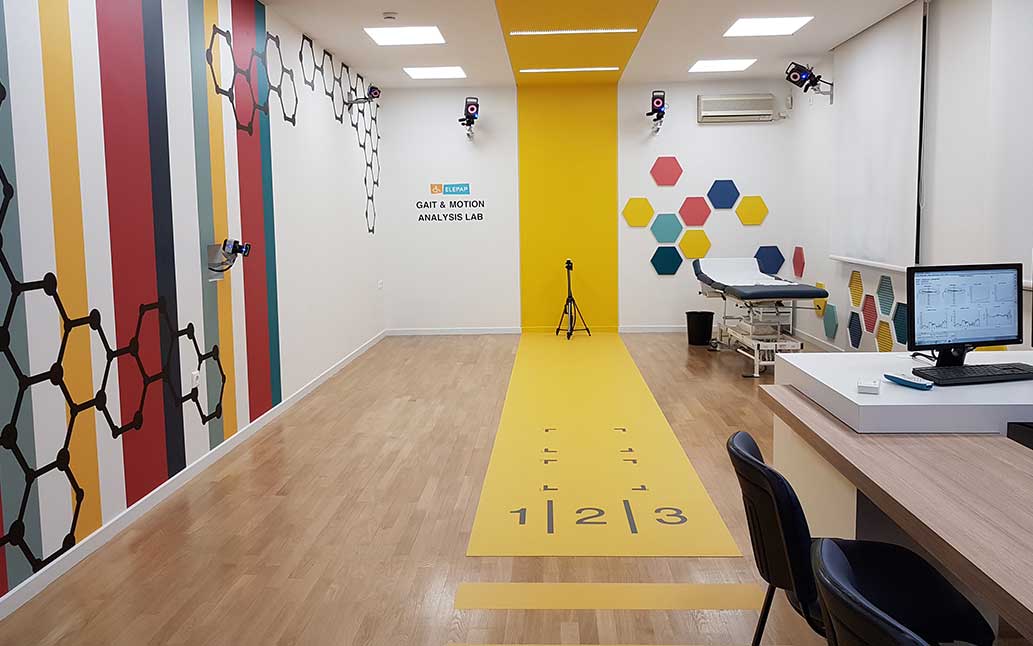
Gait Analysis
Children and adults are referred to the Gait Analysis Lab by various medical and therapeutic specialties, in order to assess gait disorders. These include simple cases such as flat foot, pes valgus, pes cavus and others, but mainly concern complex motor problems such as cerebral palsy, injuries, amputations, various syndromes, etc.
Specifically, the cases in which Gait Analysis helps are:
- Cerebral Palsy
- Acquired brain injuries
- Syndromes associated with motor problems
- Myelodysplasia – Spina bifida
- Traumatic brain injury
- Spinal cord and peripheral nerve injuries
- Myopathies
- Parkinson's Disease
- Limb length discrepancy from various causes
- Torsional deformities of the lower extremities
- Assessment of orthotics
- and others.
Purpose
The purpose of Gait Analysis is to identify and document walking problems. Gait Analysis is used: a) to plan surgical procedures and monitor their results; b) to program and monitor a conservative treatment and c) to plan and check on orthotics/prosthetics.
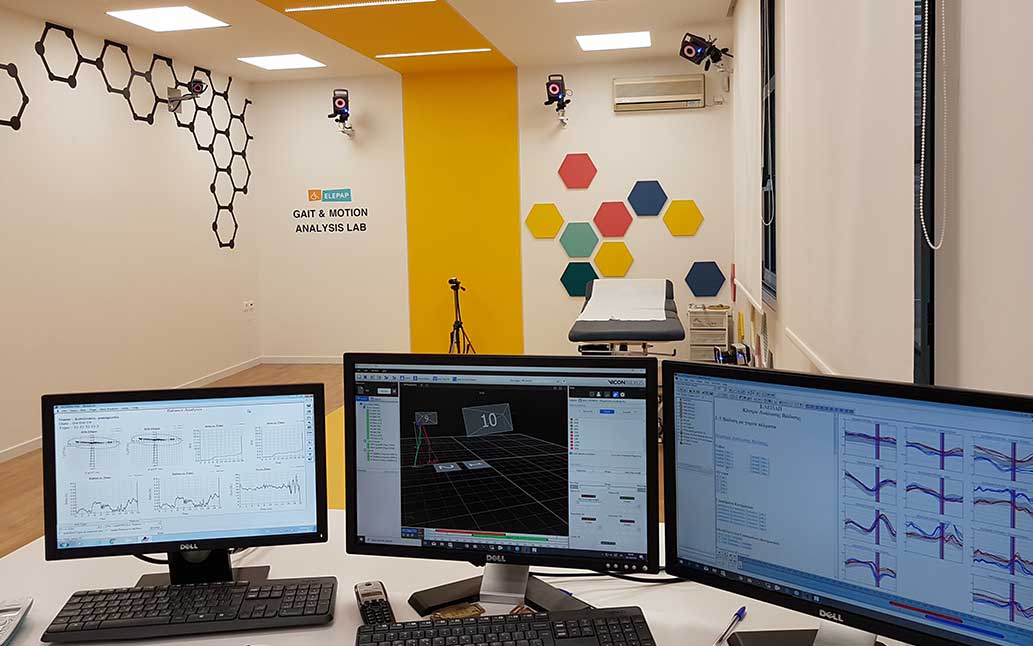
Equipment /Measurements
The Gait and Motion Analysis Lab of ELEPAP Athens possesses:
- 10 three-dimensional recording cameras (3D Vicon Cameras)
- 2 digital two- dimensional recording cameras (Pentax & Panasonic digital Cameras)
- 2 force plates (AMTI)
- 3 portable electromyography systems (Noraxon 8-channel)
- 1 foot pressure plate (MediCapture)
- 1 portable muscle strength tester (Hoogan)
- 1 adjustable clinical examination bed
- 5 computers
- 7 software programs to analyse the above data.
The measurements that can be carried out, on a case by case basis, are: 3D Kinematic Analysis, 3D Kinetic Analysis, Muscular Work Strength Analysis, Gait Electromyogram, Plantar Pressure Measurements (static/ balance and dynamic), Clinical Examination, Balance Analysis, etc.
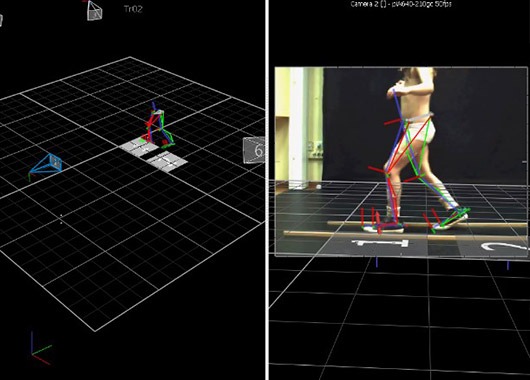
3D Kinematic Analysis
Kinematic analysis records the angular trajectory of joints in motion on all three planes of the body. It also records the temporospatial elements of motion, such as velocity, distance, pace, support and swinging periods, etc. It is able to compare all joints on every plane for the right and left side and also to compare them to normal values.
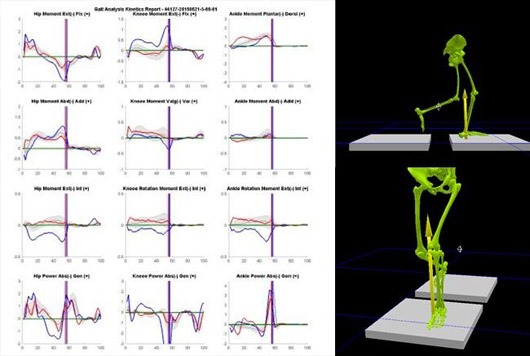
3D Kinetic Analysis
Kinetic analysis explains why the body moves in the manner that it does. It analyses the ground reaction forces for each joint and each level. Moreover, it depicts the torque applied to each joint, which results in the movement itself. Finally, it analyses the generation of power for each joint.
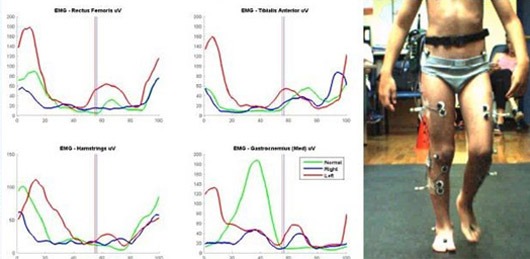
Electromyographical Examination
The electromyogram measures the electrical activity of muscles. It provides information about muscle activation in the performance of complex movements and can compare the right to the left side, as well as to normal values.
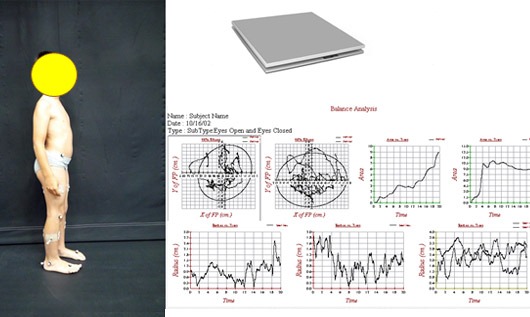
Balance Analysis
Balance analysis assesses the oscillation of the body over its support base. The center of pressure is measured, as is the manner in which it diverges from normal values. The most valid tests are maintaining balance with eyes open and closed. At the same time, it can evaluate the existence of asymmetry in the load of lower limbs.
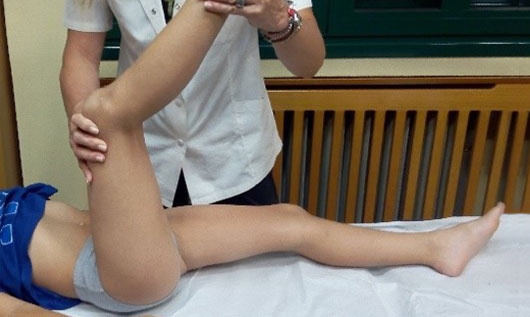
Clinical Examination and Muscular Work Strength Analysis
During a clinical examination the range of motion of joints, muscle power, limb length discrepancy, skeletal deformities and abnormalities, as well as skeletal torsional deformities are examined and assessed. Moreover, special neurological and musculoskeletal tests are used.
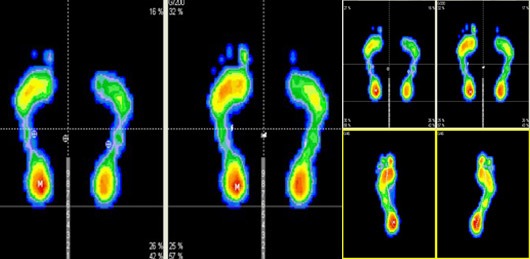
Foot Plantar Pressure Analysis
Static and dynamic plantar pressure measurements help diagnose problems caused by foot anatomy (flat feet, pes valgus… etc.), as well as how the foot functions in walking. The problems identified are usually treated with orthotics. These may include: flat foot, pes cavus, pes valgus, dropped metatarsal heads, heel spur, diabetic foot, rheumatoid arthritis, lower extremity discrepancies, axial deformities of the lower extremities, congenital clubfoot, etc. In order to be referred, the child should be: a) cooperative and b) older than 3 years old.
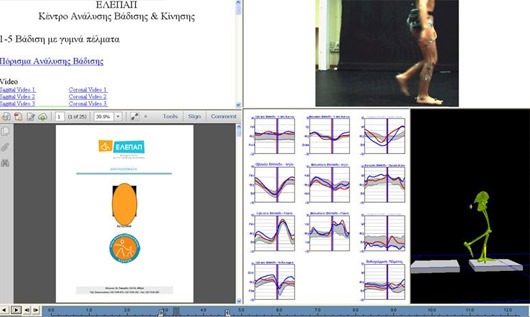
Report
The above information (Kinematic Analysis – Kinetic Analysis), are combined with the Clinical Examination, Somatometric Analysis, Static Balance Analysis and Muscular Work – Power Analysis. More than 200 parameters are therefore collated in order to draft the report with the findings. The information is analysed by a specialized scientific team made up of a Bio-mechanist, a Physiotherapist and an Orthopedic Surgeon. The final report contains observations drawn from comparing the patient’s data with the expected normal values in order to draw the final conclusion.

Prerequisites
Referral prerequisites are: a) the person undergoing testing must be able to walk independently or with an aid; b) the person must be over 5 years of age; and c) communication and collaboration with the referring physicians to be able to give them a full update.
Through the insight gained by the ever-growing body of literature, know-how and international practice, we are able to draw the conclusion that Gait and Motion Analysis is an invaluable decision-making tool, which helps us to deal with complex motor problems.


